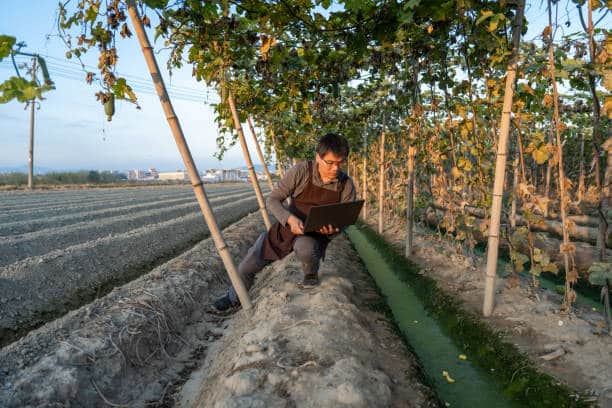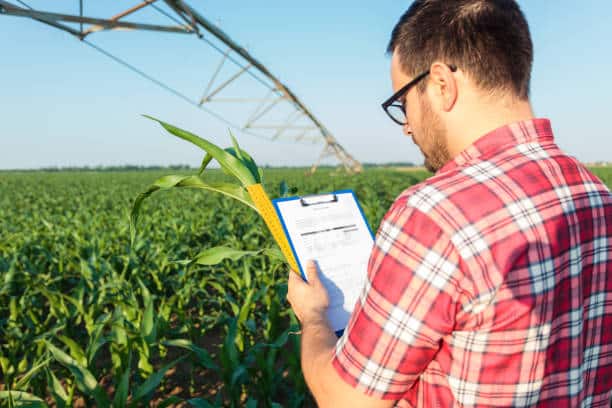Agricultural Big Data: An Overview
Agricultural Efficiency Big data has changed many sectors, and the agricultural industry is no different. Big data plays a pivotal role in modern agriculture in terms of improving efficiency at the intersection of technology and conventional farming methods.
Farmers may improve decision-making, resource utilization, and output by tapping into massive amounts of data gathered from many sources. This article explores the many ways big data is changing the face of agriculture, from revolutionizing farming techniques to making supply chain management more efficient and even helping the industry become more sustainable.
A Glimpse into Big Data for Farmers

When talking about technology in agriculture, “big data” describes the mountain of information created by things like sensors, drones, satellite photos, GPS-enabled machinery, and other precision farming aids. Forecasts, soil conditions, crop yields, insect infestations, and market tendencies are all part of this data set.
Farmers are able to make better, more timely decisions by studying these varied data sets. A major departure from conventional wisdom is evident in the incorporation of big data into agricultural operations, which place an emphasis on data-driven decision-making rather of relying solely on gut feelings and past experience.
A Data-Driven Approach to Precision Agriculture
A prime example of how big data is revolutionizing farming is precision agriculture. This method optimizes crop farming field management through the use of data analytics. Soil, weather, crop health, and equipment efficiency data is gathered by technologies like GPS, remote sensing, and Internet of Things (IoT) devices.
After that, the data is examined in order to derive useful conclusions. Soil scientists can calculate the best times to plant seeds, the best times to water, and the precise amounts of pesticides and fertilizers that crops need. By making sure resources are used efficiently, precision agriculture decreases costs, maximizes crop yields, and minimizes waste.
Improving Crop Management with the Use of Big Data
Big data is also revolutionizing crop management, another crucial field. Crops can be better monitored and managed when farmers have access to detailed information about soil moisture, nutrient content, and weather predictions.
By using advanced analytics, we can anticipate when pests will invade and when diseases will spread, allowing us to safeguard crops in advance. Big data analytics can also predict crop yields, which aids farmers in harvest planning and inventory management. The ability to foresee future events makes farming safer and more lucrative by lowering the inherent risk and uncertainty in the industry.
Improving the Effectiveness of the Supply Chain

The agriculture supply chain is profoundly affected by the far-reaching advantages of big data. Farmers and agribusinesses can improve efficiency by studying data on storage conditions, transit logistics, and market demand. To guarantee that crops are delivered fresh and in perfect shape, real-time tracking is done by GPS and IoT devices.
In addition to lowering transportation expenses and spoilage, big data assists in determining the most cost-effective transportation routes and methods. Producers and consumers alike get the rewards of better supply chain management in the form of increased profits and decreased food waste.
Integrating Big Data for Sustainable Agriculture
Concern about the environment is on the rise in the agricultural sector, and big data provides practical answers to this problem. Big data helps lessen agriculture’s ecological footprint by maximizing the efficiency with which resources are used.
For example, by utilizing soil moisture data to guide irrigation, water is not wasted, and chemical runoff into water bodies is minimized by focused fertilizer application. Better land management practices are made possible by big data, which monitors soil health and suggests crop rotations and cover crops to keep soil fertility high. In addition to preserving agricultural land for future generations, these sustainable approaches minimize negative impacts on the environment.
Management of Livestock with Big Data
The incorporation of big data also helps the livestock industry. Wearable sensors and sensors implanted in animals record vital signs like pulse rate, temperature, and gait. The real-time monitoring of livestock health and welfare is made possible by this data for farmers.
Timely intervention reduces death rates and improves overall productivity through early detection of diseases through data analytics. Livestock farming may be made more efficient and profitable with the help of big data, which can optimize breeding plans and feeding regimens.
Conquering Obstacles to Big Data Implementation

Using big data in farming isn’t without its difficulties, despite all the advantages it offers. A major obstacle is that small-scale farmers may not be able to afford the high cost of modern technologies and data analytics tools. Inadequate infrastructure, like data storage facilities and high-speed internet, may also be hard to come by in more remote places.
Additionally, there is a need to safeguard sensitive information regarding agricultural methods and crop production, which raises concerns about data privacy and security. Governments, technology providers, and the farming community must work together to tackle these difficulties and guarantee that big data technologies are accessible to all.
Real-Life Examples: How Big Data Has Revolutionized Agriculture
The agricultural sector has been able to successfully use big data in a number of case studies. Case in point: Monsanto’s Climate FieldView platform, which combines information from multiple sources to give farmers useful insights about crop health, weather, and performance.
Precision agricultural solutions by John Deere are another good example; these solutions optimize the usage of machinery and increase crop yields through the use of data analytics. These real-life examples of big data’s positive effects highlight the technology’s promise to transform farming methods and boost productivity industry-wide.
How Big Data Will Change Agriculture in the Future
With technology constantly improving, the use of big data in agriculture is only going to grow in the future. The next generation of data analytics is going to be powered by cutting-edge technologies like AI and ML, which will allow for better insights and more targeted suggestions.
Further, when Internet of Things (IoT) devices proliferate, they will produce even more detailed data, which will allow farmers to oversee and control their operations with hitherto unseen precision. More and more farmers will be using big data to improve their operations’ efficiency and sustainability as these technologies are cheaper and easier to acquire.
Conclusion
Finally, farmers are able to optimize their operations with the help of big data, which is revolutionizing agriculture. There is a wide range of fields that can benefit from big data, including sustainable practices, supply chain efficiency, precision agriculture, and crop management.
Cost, infrastructure, and data security are still major concerns, but the advantages might be substantial. To keep up with the demands of a dynamic and unpredictable world, the agricultural industry must fully embrace the data-driven revolution. This will lead to greater profitability, sustainability, and productivity in the future.

